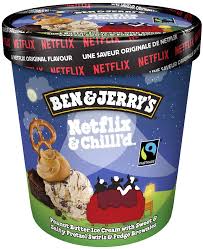Alternative Approaches to Positioning
Some marketers have proposed other, less-structured approaches in recent years that offer provocative ideas on how to position a brand. These include brand narratives, storytelling, and cultural branding
Brand Narratives and Storytelling
Rather then outlining specific attributes or benefits, some marketing experts describe positioning a brand as telling a narrative or story. Companies like the richness and imagination they can derive from thinking of the story behind a product or service. Randall Ringer and Michael Thibodeau see narrative branding as based on deep metaphors that connect to people’s memories, associations, and stories.
They identify five elements of narrative branding:
- the brand story in terms of words and metaphors,
- the consumer journey or the way consumers engage with the brand over time and touch points where they come into contact with it,
- the visual language or expression for the brand,
- the manner in which the narrative is expressed experientially or the brand engages the senses, and
- the role the brand plays in the lives of consumers
Example of visual storytelling
“Visual storytelling involves the use of graphics, images, pictures, and videos to engage with viewers in an effort to drive emotions, engage intercommunication, and motivate an audience to action.”
Patrick Hanlon developed the related concept of “primal branding” that views brands as complex belief systems. According to Hanlon, diverse brands such as Google, MINI Cooper, the U.S. Marine Corps, Starbucks, Apple, UPS, and Aveda all have a “primal code” that resonates with their customers and generates their passion and fervor. Seven assets make up this belief system or primal code: a creation story, creed, icon, rituals, sacred words, a way of dealing with nonbelievers, and a good leader.
Cultural Branding
Douglas Holt believes that for companies to build iconic, leadership brands, they must assemble cultural knowledge, strategize according to cultural branding principles, and hire and train cultural experts.
Coca-Cola. Harley-Davidson. Nike. Budweiser. Valued by customers more for what they symbolize than for what they do, products like these are more than brands–they are cultural icons. How do managers create brands that resonate so powerfully with consumers? Based on extensive historical analyses of some of America’s most successful iconic brands, including ESPN, Mountain Dew, Volkswagen, Budweiser, and Harley-Davidson, this book presents the first systematic model to explain how brands become icons. Douglas B. Holt shows how iconic brands create “identity myths” that, through powerful symbolism, soothe collective anxieties resulting from acute social change. Holt warns that icons can’t be built through conventional branding strategies, which focus on benefits, brand personalities, and emotional relationships. Instead, he calls for a deeper cultural perspective on traditional marketing themes like targeting, positioning, brand equity, and brand loyalty–and outlines a distinctive set of “cultural branding” principles that will radically alter how companies approach everything from marketing strategy to market research to hiring and training managers. Until now, Holt shows, even the most successful iconic brands have emerged more by intuition and serendipity than by design. With How Brands Become Icons, managers can leverage the principles behind some of the most successful brands of the last half-century to build their own iconic brands. Douglas B. Holt is associate professor of Marketing at Harvard Business School.
Ben Jerry’s ice-cream is a good example of cultural branding. Launched into a mature market in the late 1970s with no money, no new technologies and no product innovation, sales increased from $180,000 in 1979 to $58 million in 1989 and to $237 million in 1999 when it was bought by Unilever for $326 million. The authors attribute their success entirely to cultural branding; by positioning themselves as an ideological counterpoint to the rise of Reaganism at a time when severe fault lines were developing in America between liberals and conservatives.

The University of Wisconsin’s Craig Thompson views brands as sociocultural templates, citing research investigating brands as cultural resources. For example, American Girl dolls tap into mother–daughter relationships and the cross-generational transfer of femininity. Experts who see consumers actively co-creating brand meaning and positioning refer to this as “Brand Wikification,” given that wikis are written by contributors from all walks of life and points of view.
